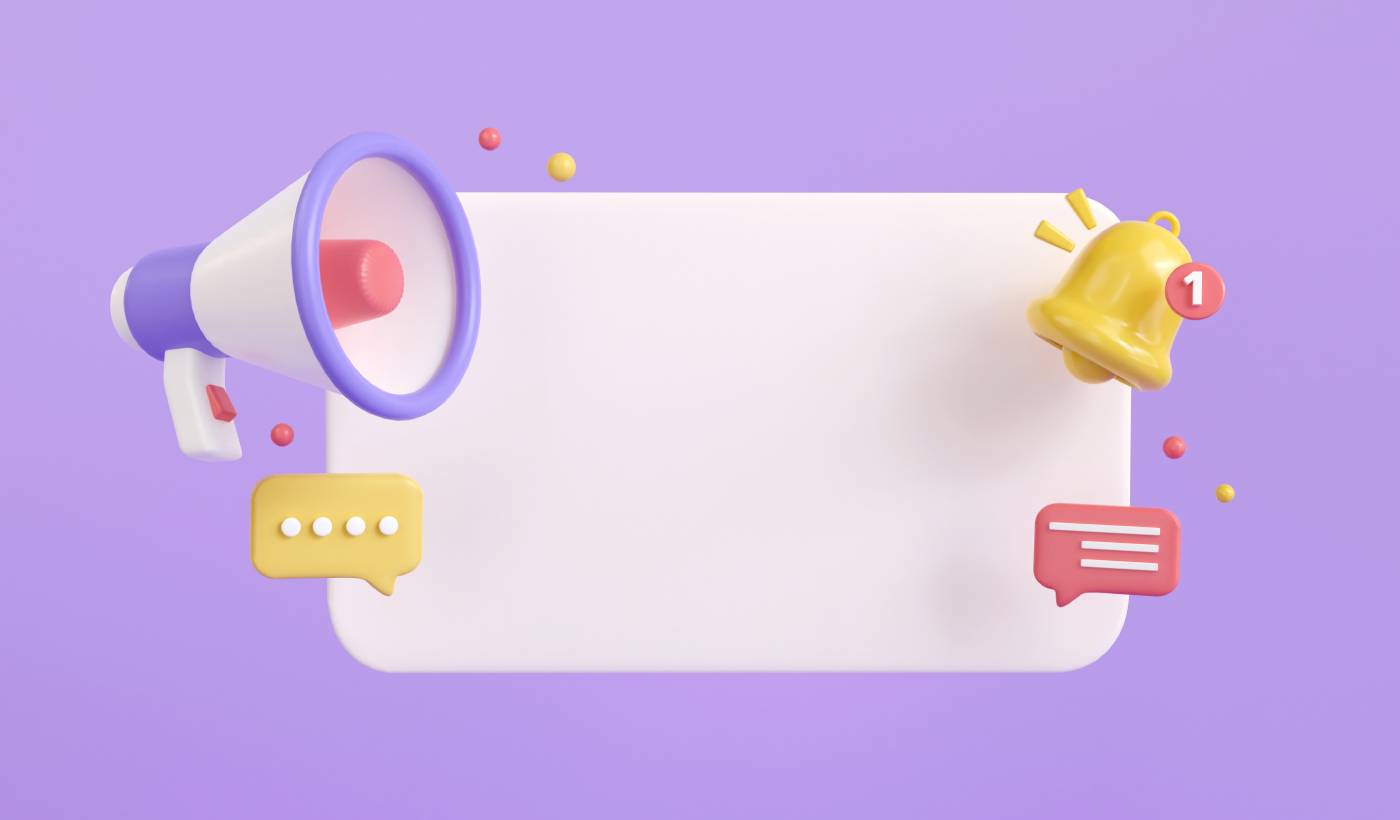Are HubSpot push notifications worth your time?
HubSpot is a popular Customer Relationship Management (CRM) software that offers multiple products to engage and sell to your audience. If you’re looking for cross-channel promotions, then HubSpot is a powerful option.
But how great is their product for sending web push notifications?
In this article, we’re going to break down HubSpot’s web push notifications software. We believe that PushEngage is a much better choice for sending push notification campaigns. To be fair, HubSpot isn’t a specialized push notification service and we’re only comparing web push notifications in this article.
PushEngage is the best push notification software in the world. So, the fact that PushEngage does a better job of serving push notifications doesn’t take anything away from HubSpot’s software suite as a whole.
That being said, let’s take a closer look at why PushEngage is a better fit for sending push notifications.
Are the HubSpot Push Notifications Any Good?
HubSpot is one of the best CRM tools in the world. As with most CRM tools, HubSpot connects with a whole host of marketing tools. So, in reality, HubSpot doesn’t actually offer web push notifications. But rather, it integrates with a push notification service called OneSignal.
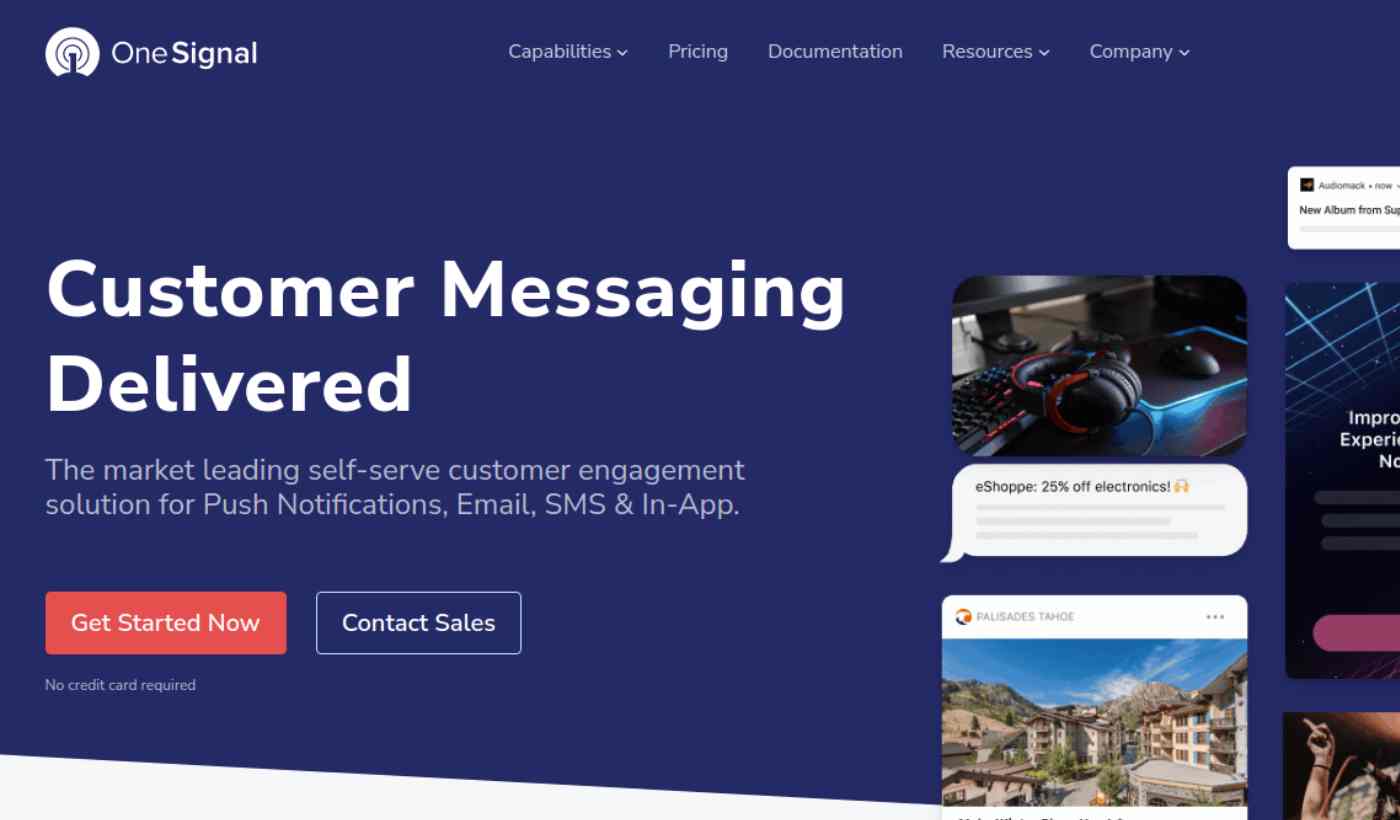
So, in this article, we’ll be comparing OneSignal to one of the top OneSignal alternatives – PushEngage.
Let’s check out the actual power of HubSpot push notifications when you compare it to PushEngage.
Ease of Use: PushEngage vs HubSpot Push Notifications
On the surface, HubSpot offers really cool web push notification campaigns. You can use OneSignal to engage, retain, and directly sell to your subscribers. But the offerings are meant more for developers than small businesses.
For instance, OneSignal’s documentation and previews are quite limited. So, it can be difficult for someone with no experience with push notifications to understand how a message will look on different browsers before sending it.
The worst part is that with HubSpot push notifications, it’s even more limited because absolutely everything has to be set up either manual. So, you’re going to need a development team to even send push notifications beyond a simple broadcast push.
With PushEngage, you get a live preview of every notification you create across multiple browsers and operating systems.
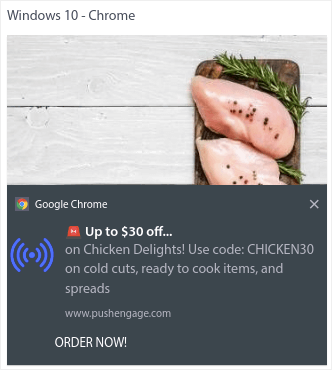
Not just that, you also get to create powerful push notifications that work. And if you’re stuck you get access to a really robust documentation system for their already easy to use dashboard.
Almost any push campaign you can think of, you can create directly from the dashboard. The only part where you may need a developer is to create a custom campaign using the PushEngage API or if you need to create custom triggered campaigns.
HubSpot Push Notifications Campaign Types vs PushEngage
From the looks of it, you can set up personalized push notifications using custom attributes from OneSignal and HubSpot’s CRM. But you can also use their platform to create:
- Targeted push notifications
- Welcome push notification campaigns
- Re-engagement push notifications campaigns
This sounds like a lot. But the reality is that you need serious experience in creating push notification campaigns to be able to use any of these campaigns effectively. Not just that, OneSignal offers only 20 segments and 100 data tags. And that’s for their highest package. Just imagine how restrictive the free plan is going to be for you.
This may seem trivial, but if you’re running multiple websites, this becomes a pain really fast. That’s where PushEngage one-ups OneSignal with unlimited segments and tags for custom campaigns.
With PushEngage, you get pre-designed push notification campaign templates that you can use straight out of the box.
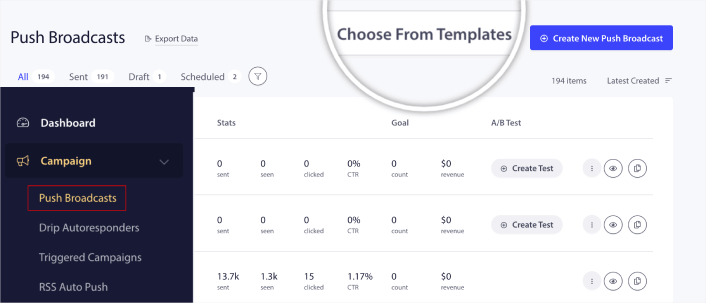
Here’s the best part: You get campaign templates for automated drip push notifications.
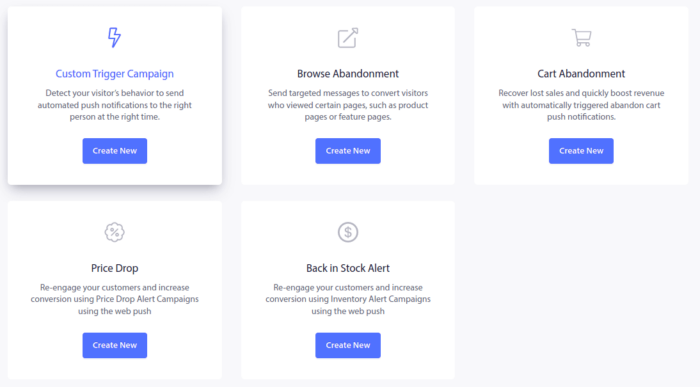
With PushEngage, you can create triggered campaigns such as:
And you can set up these campaigns from an easy-to-use dashboard instead of having to create custom campaigns using code. Of course, if you want to create a custom campaign using PushEngage, there’s nothing stopping you from doing it. You can check out the PushEngage API to create advanced campaigns.
Push Notification Optins
Is it easy to collect subscribers for HubSpot push notifications?
Short answer: No! It’s the same problem as the campaigns. You need to manually code the logic to show push notification options that collect subscribers.
PushEngage makes it super easy to create and style multiple push notification options from a simple dashboard.
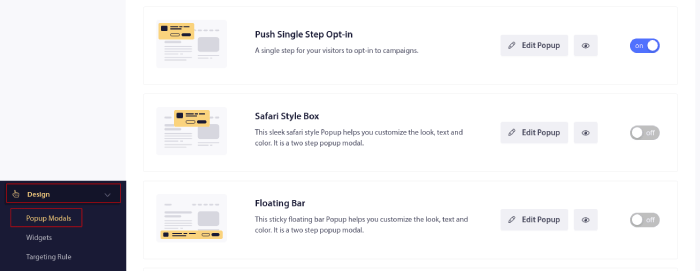
You can also create blog subscription widgets and popup modals that allow you to segment your subscribers according to their interests.
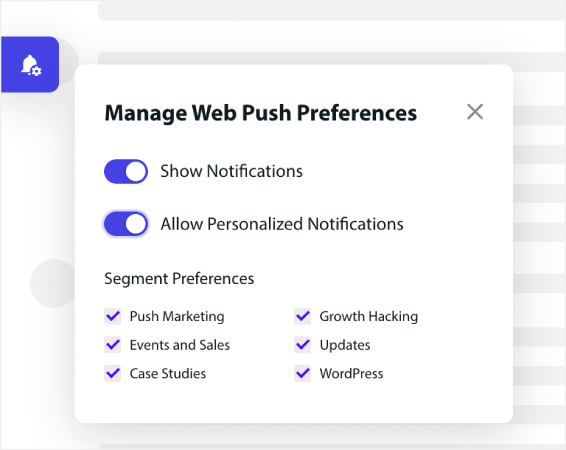
PushEngage has a clear advantage over HubSpot push notifications if you’re looking to get started quickly and create push notification campaigns with zero coding experience.
Do You Get Advanced Analytics and Conversion Tracking?
Both PushEngage and HubSpot push notifications come with a built-in analytics suite that includes conversion tracking. But there’s a clear difference in the way these software approach analytics.
HubSpot is a CRM tool. So, the metrics provided in their analytics dashboard are usually personalized metrics based on very specific and limited goals for all types of campaigns. In other words, PushEngage gives you dedicated analytics for your push notifications whereas OneSignal’s HubSpot push notifications give you the combined data for email, web push, and SMS campaigns.
And you can only fetch analytics data for OneSignal using their Analytics API. On the other hand, with PushEngage, you get a dedicated analytics suite inside the dashboard.
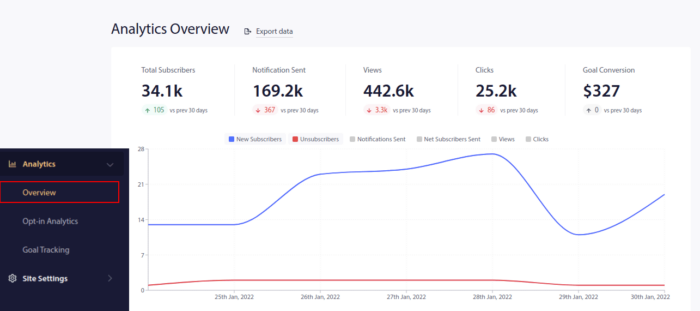
You can also check out optin analytics to optimize your popup modals and collect more push notification subscribers.
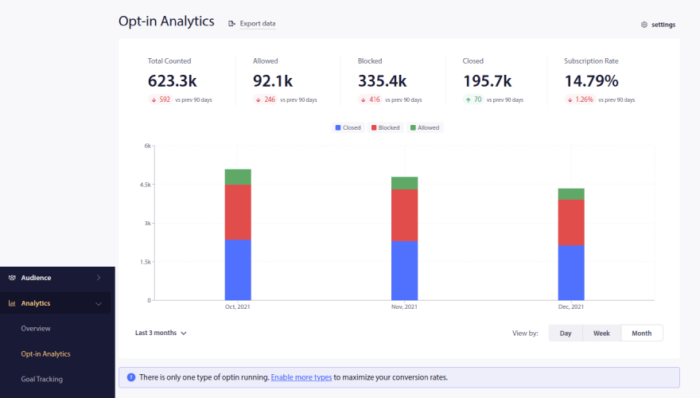
If you want, you can even see how well each push notification has performed.
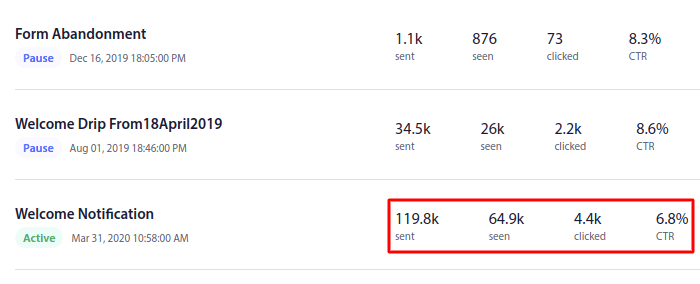
The best part is that you can also set up PushEngage to track push notifications on Google Analytics. It’s a really elegant way to use a common analytics reporting tool to also track specific goals for your push notification campaigns.
It’s the exact same thing with push notification A/B testing. With HubSpot, you’ll have to use OneSignal’s API to split test your notifications. However, with PushEngage, you can create A/B tests straight from the dashboard while you create a push notification.
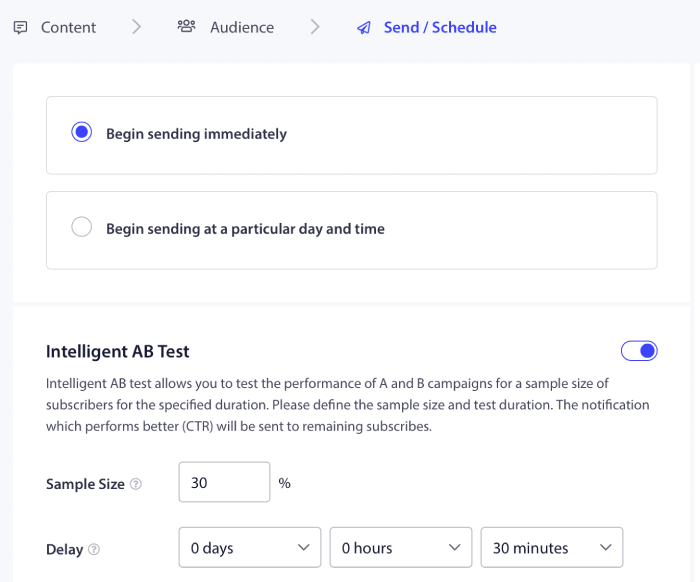
The coolest part is that you can create Intelligent A/B Tests in PushEngage to increase your click rates. In an Intelligent A/B Test, you test for performance with a smaller audience before sending out the winning notification to the rest of your subscribers.
You can even set up A/B tests from a push notification template.

What’s the Customer Satisfaction Like?
PushEngage outperforms OneSignal in terms of customer satisfaction scores because of the simple, easy-to-use interface you get with PushEngage. If you check the full report, you’ll see that PushEngage is better at:
- Product-market fit: 98% of reviewers found PushEngage to be the right solution to send push notifications
- Ease of use: PushEngage allows you to create powerful push notification campaigns from an easy-to-use dashboard
- Ease of setup: You can set up PushEngage very easily with a few guided clicks for most websites
- Ease of administration: It’s super easy to use PushEngage across the entire marketing team
- Quality of support: PushEngage offers a superb team of customer success professionals
- Product direction: 96% of users feel that PushEngage is developing features that are genuinely useful to them
OneSignal has some advanced personalization options, but the product is also complex. So, you’ll need real training and support to use it effectively. With PushEngage, there’s no such challenge. In fact, the dashboard is designed to help you get started quickly and make the most of the software.
The first time you log into your PushEngage dashboard, you get a welcome challenge.
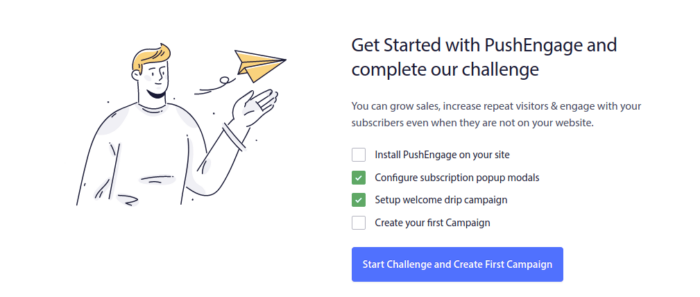
The welcome challenge is designed to teach you how to use the software in less than 10 minutes. So, of course, PushEngage has really high customer satisfaction scores!
HubSpot vs. PushEngage Pricing
You can’t really estimate HubSpot push notification pricing. Remember, it’s just an integration with OneSignal. So, you can only get push notifications with HubSpot if you’re using both HubSpot and OneSignal.
But that’s not how PushEngage does things. You get an open and transparent pricing model is a much better experience for new customers.
Both OneSignal and PushEngage offer dynamic pricing. But the difference is that with PushEngage you can actually see the costs upfront. So, there are no surprises later on.
Also, you get a clear picture of the minimum amount you’ll have to spend to get access to certain features in PushEngage. You also get a detailed breakdown of usage limitations in each plan:
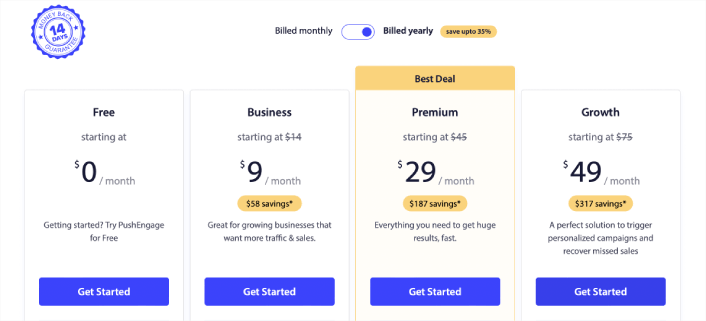
You can also get started with the free plan to try out the software if you’re not really sure if it’s the right fit for you. PushEngage is the best free push notifications service. So, you can get started with powerful push notification campaigns even if you’re on a limited budget.
HubSpot Push Notifications vs. PushEngage: Who Wins?
Hands down, PushEngage is the best push notification software in the world.
You get a range of features to support small businesses and enterprise software alike. PushEngage is designed to empower small businesses to compete with big brands. And it’s a good fit at every stage of growth whether you’re looking to start, grow, or scale your business.
If you’re new to push notifications, you should also check out these other great resources:
- How To Add Web Push Notifications to Your WordPress Website
- What Are Push Notifications? A Simple Guide for Epic Results
- Push Notification Cost: Is It Really Free? (Pricing Analysis)
And if you haven’t already, get started with PushEngage today to get to the next level!
